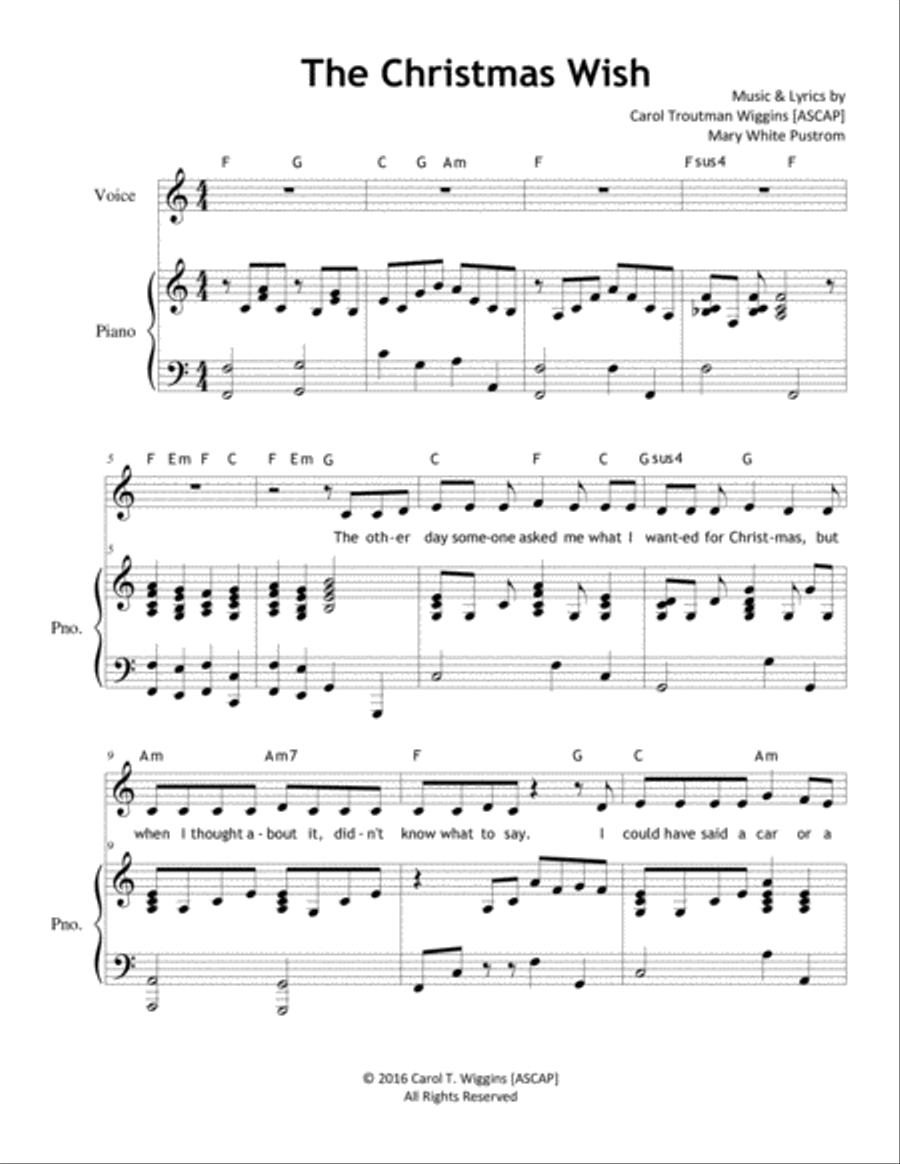Choral Choir (Unison) - Level 4 - Digital Download SKU: A0.727123 Composed by Carol Troutman Wiggins [ASCAP], Mary White Pustrom. Christmas,Contemporary,Holiday,Pop,Singer/Songwriter. Octavo. 11 pages. Carol Troutman Wiggins #2907289. Published by Carol Troutman Wiggins (A0.727123). The Christmas WishVocal Solo for AltoWould you like a different kind of Christmas wish this year? Here it is!This song is based on the poem Christmas Wishes written by contemporary author and poet Mary White Pustrom. Mary wrote many poems with the theme of Christmas, including what she thought people should wish for at Christmas. While so many adults wish for a new car, a sparkling diamond ring, or celebrating with a nice vacation in the tropics, she believes that Christmas wishes should be taken a step further by considering the wishes and needs of others more so than our own. In her poem Christmas Wishes, her desire for reaching out to others and granting them their wishes for the simple things in life take on great meaning: Christmas Wishes by Mary White Pustrom Now that Christmas is drawing near I cannot help but seeAll the poor and needy people who are reaching out to me. It seems that everywhere I look there is a need to fill; I feel so inadequate when their wishes I can't fill. Among the lights and decorations, there is hunger and despair, Faces filled with sadness while bright carols fill the air; Little children who are cold and hungry wait for Santa Claus, Wishing that he would bring them food, for that's a worthy cause. Others laughing, smiling, singing - so completely unaware Of all the pain and suffering that's around them everywhere; They wish for generosity in our thoughts, time, and deeds, And wish that here at Christmas time, someone could fill their needs. My wish is that we reach out to our sisters and our brothers, Who depend on us for kindness from one to another; Fill our hearts with Christmas cheer, and teach us how to share, So that Christmas wishes will be fulfilled all throughout the year. It sounds like she might have the right idea. At this time of year, it is so easy to get caught up in buying and receiving presents, the lights, and the Christmas tree, without considering the simple needs of others. Maybe this year, these simple wishes will come true for some: · Sick little children to be healed · Homeless people and children to find a family · For the less fortunate to have enough food, clothing, shelter, and shoes on their feet · That no one spends Christmas lonely and alone, and spent the way it should be, with loving family and friends. Most of all, wish that by caring for one another, Christmas wishes would come true all year long. ~ Carol Troutman Wiggins
